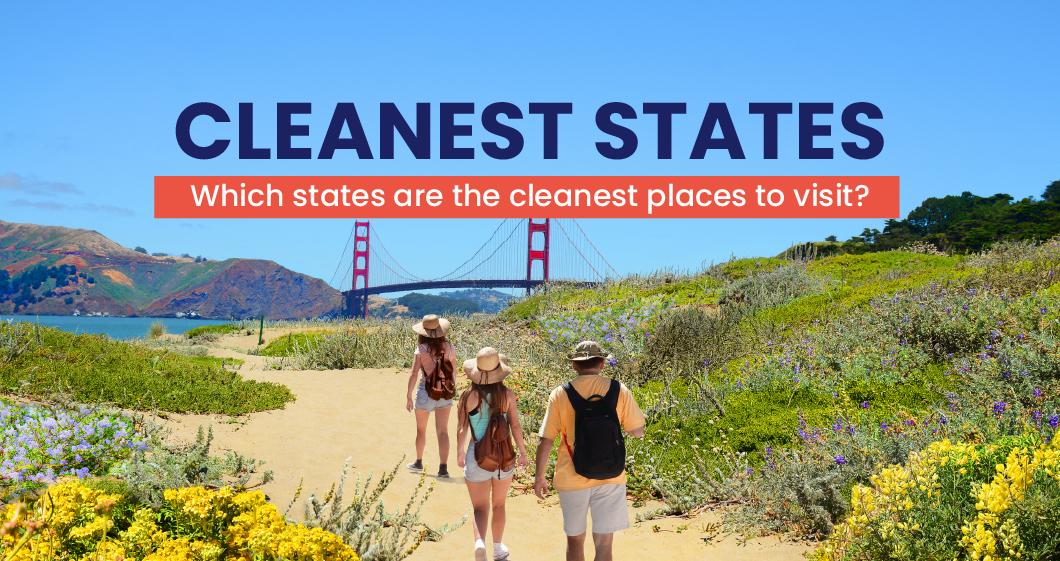
Cleanest States
Which states are the cleanest places to visit?
With travel options being so limited lately, many of us could do with a well-earned vacation. However, at a time when cleanliness is more important than ever, many of us are wary of traveling to places that we’re unfamiliar with.
The last thing you want on vacation is to find yourself in an unpleasant, unhygienic, or just plain dirty environment. For many of us, the whole point of a getaway is to relax and have a pleasant experience, not to be made uncomfortable by worse conditions than we experience at home. Whether you’re after clean air or a pristine beach, the local area’s approach to cleanliness can have a big impact on your trip.
To help reassure potential travelers, we wanted to find out which states are the cleanest to visit. We’ve looked at several factors that can be used to indicate just how clean each state is, and have combined them into a single score.
So, does your vacation state perform well? Or does your home state lag behind in the rankings? Check out our table to find out!
The cleanest states
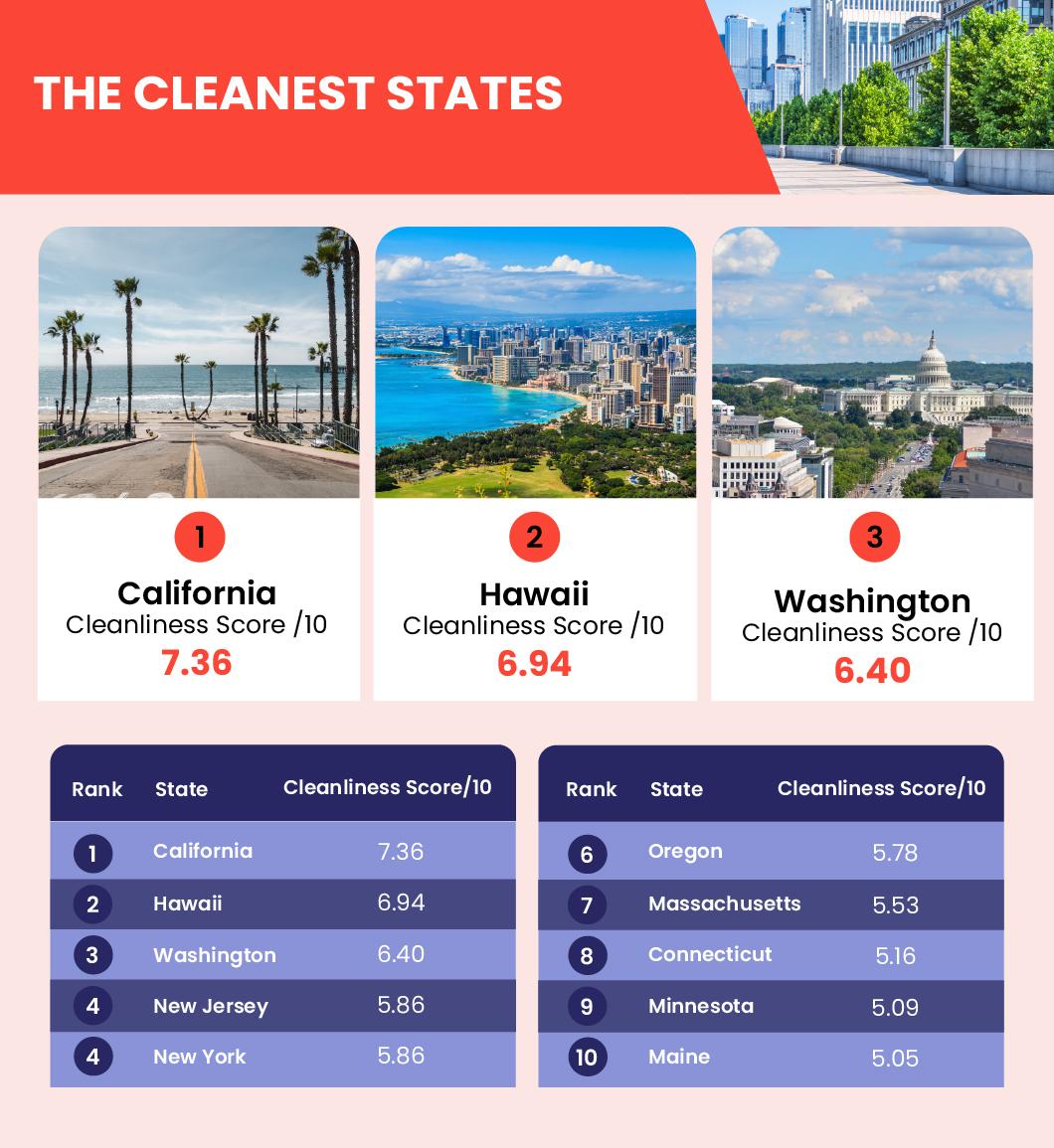
1. California Cleanliness Score: 7.36
California is the cleanest state overall with a cleanliness score of 7.36. Californians appear to be very conscious of their carbon footprint, as they perform very highly in terms of adopting electric vehicles. This helps to prevent the air pollution levels in the state from rising too high, especially in built-up areas where traffic can build up.
2. Hawaii Cleanliness Score: 6.94
Hawaii claims second place with a cleanliness score of 6.94. Being so far removed from the US mainland, Hawaii benefits from clean ocean air blowing in from all directions. They also have a relatively high take-up of electric vehicles, keeping pollution levels low.
3. Washington Cleanliness Score: 6.40
Washington is the cleanest state overall, topping the leaderboard with a score of 6.40. With a lower population density than many other states, Washington is a great place for fresh air and low pollution levels.
The dirtiest states

1. Kentucky Cleanliness Score: 2.12
Kentucky came last after all 49 other states, having received a cleanliness score of just 2.12. If you’re looking for a clean, refreshing getaway this might not be the state for you.
2. Tennessee Cleanliness Score: 2.20
Tennessee has the second lowest cleanliness score of just 2.20. A combination of low recycling rates, poor air quality, and low levels of electric vehicle adoption keeps Tennessee near the bottom of the table.
3. Mississippi Cleanliness Score: 2.25
Mississippi came third from the bottom of the pile for cleanliness, scoring only 2.25 overall. One of the lowest recycling rates in the country, combined with poor air quality and a lack of interest in hand sanitizer placed this state near the bottom of the pack.
The states that recycle the most
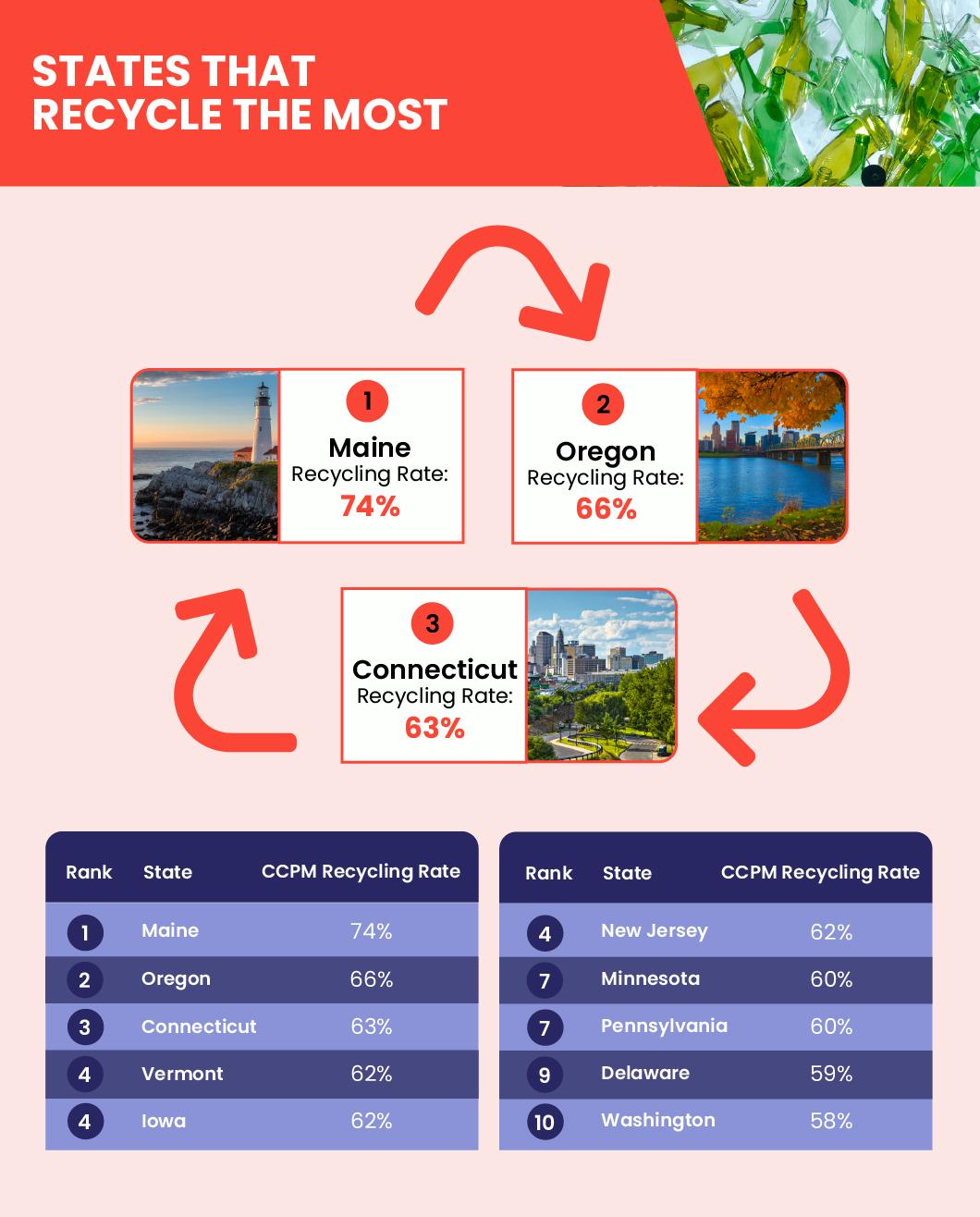
1. Maine Recycling rate: 74%
The state that has the highest rate of recycling is Maine, where 74% of all common container and packaging materials (CCPM) are recycled. By keeping these waste materials in use, fewer raw resources are needed to produce future products, and the waste is prevented from polluting the environment.
2. Oregon Recycling rate: 66%
Oregon has the second-highest rate of CCPM recycling in the country, with two-thirds (66%) being recycled. This helps to keep the state’s streets and waterways free of litter and pollution.
3. Connecticut Recycling rate: 63%
Connecticut is the state with the third-best recycling rate, with 63% of CCPMs being recycled.
The states with the best air quality
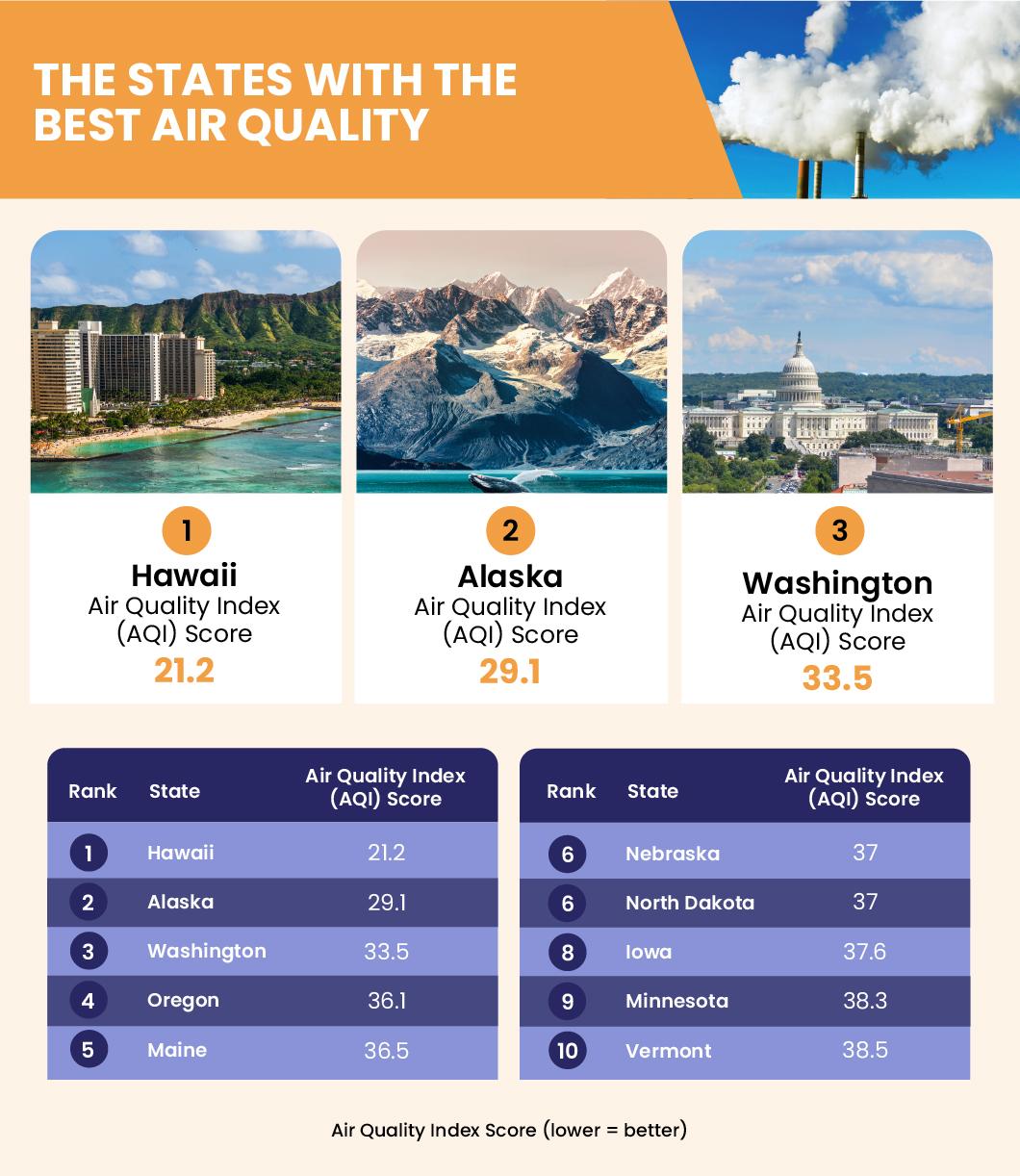
1. Hawaii Air quality AQI score: 21.2
Hawaii is the state with the best air quality, receiving an AQI score of 21.2, indicating that the air here is largely free from pollutants and is clean enough not to cause any health difficulties for residents. Being in the middle of the Pacific Ocean, Hawaii’s air is constantly refreshed with sea air blowing in from all directions.
2. Alaska Air quality AQI score: 29.1
The most northerly state, Alaska recorded the second-best AQI score of 29.1. Being so sparsely populated, with such a pristine natural environment, Alaska’s air quality is considerably better than the majority of US states.
3. Washington Air quality AQI score: 33.5
Washington’s air quality is good enough for it to place third in our rankings, having recorded an AQI score of 33.5. Benefitting from sea air blowing in from the Pacific, Washington’s air quality is further enhanced by its relatively high uptake of electric vehicles, which suggests local Washingtonians are more concerned with pollution than the average American.
The states with the biggest electric vehicle (EV) take-up
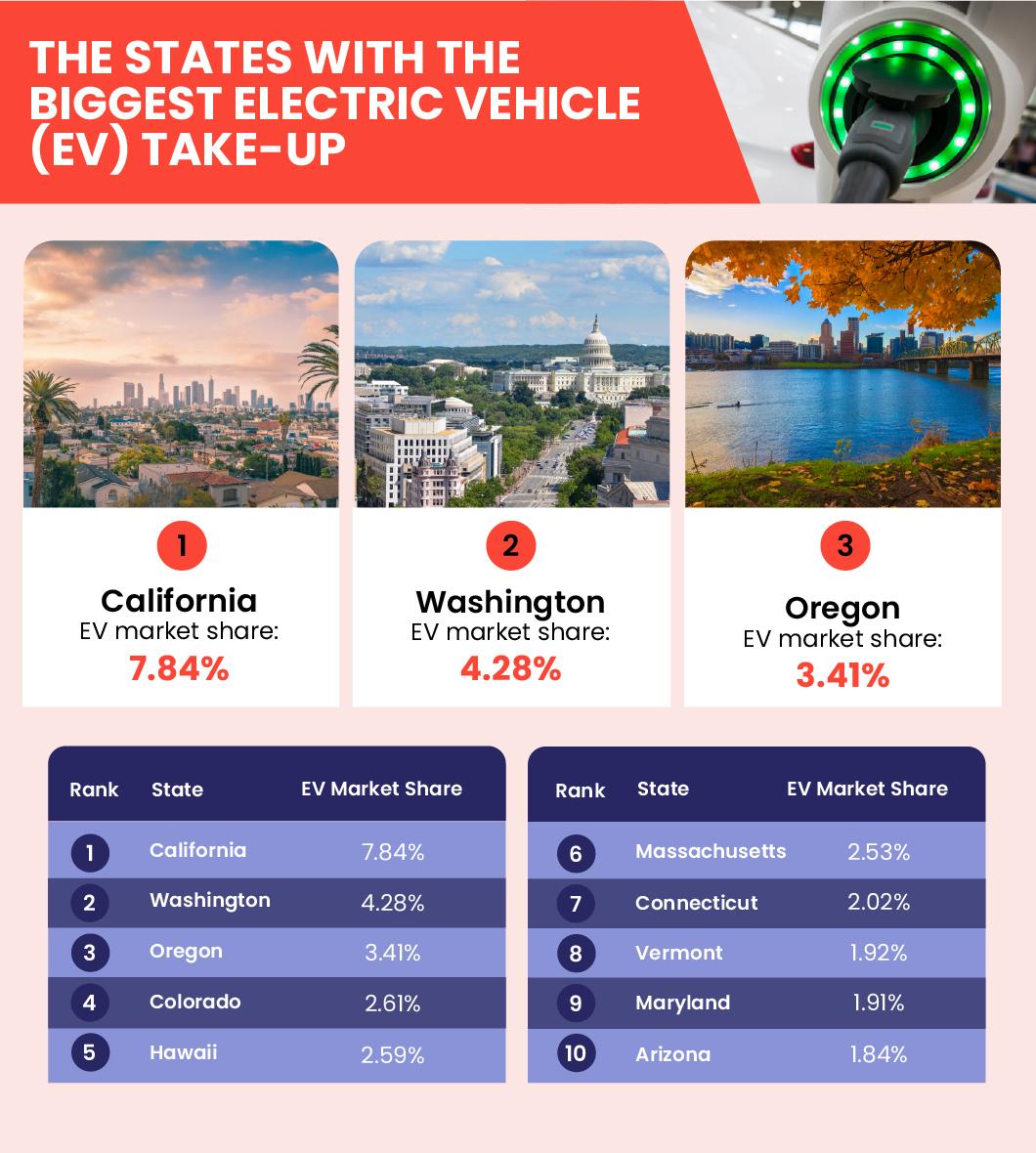
1. California EV market share: 7.84%
California is the state with the highest uptake of electric vehicle ownership in the country, where EVs make up 7.84% of the automotive market. Being something of a tech hub, with many tech companies having their HQs here, it seems only natural that California would be quick to adopt this new technology.
2. Washington EV market share: 4.28%
Washington is the state with the second-highest rate of EV ownership, with electric vehicles accounting for 4.28% of the in-state market.
3. Oregon EV market share: 3.41%
Oregon has the third-highest EV adoption rate, with an EV market share of 3.41%. This confirms the West Coast as being the most eager part of the country to shift to electric vehicles over diesel or petrol options.
The states that keep their hands clean
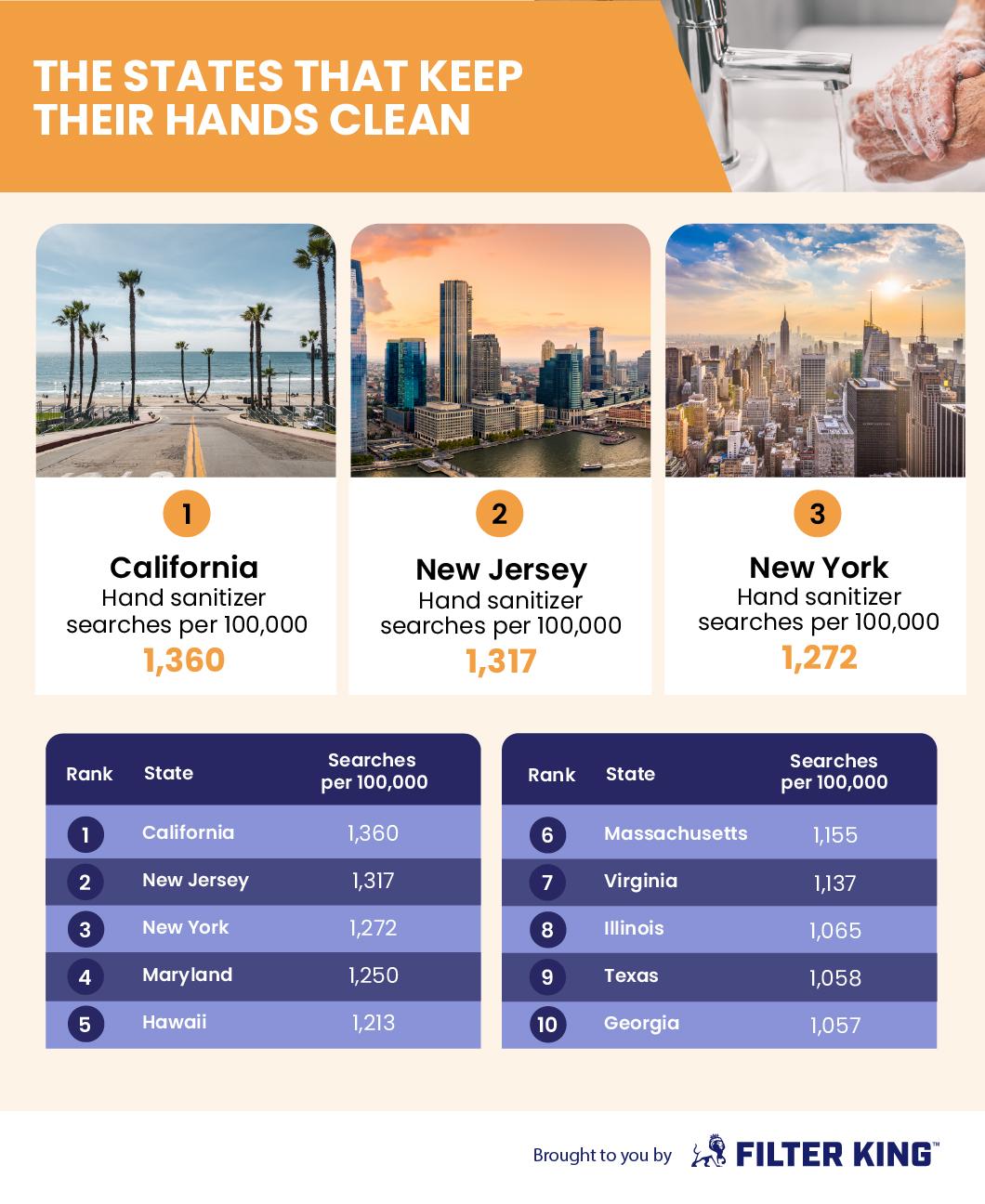
1. California Hand sanitizer searches per 100,000: 1360
California has the greatest interest in hand sanitizer, with 1360 searches per 100,000 people over the last year. This indicates that Californians are very interested in their own personal health and hygiene, so you’re less likely to pick up a nasty bug when touching public surfaces.
2. New Jersey Hand sanitizer searches per 100,000: 1317
New Jersey has the second highest number of searches for hand sanitizer, with 1317 searches per 100,000 people. This should be reassuring to anyone who uses public transportation, as your fellow passengers are more likely to be clean and considerate of public hygiene.
3. New York Hand sanitizer searches per 100,000: 1272
New York came third for interest in hand sanitizer, with 1272 searches per 100,000 people in the state. As you use your hands for everything from cooking to cleaning, keeping them clean is one of the best ways to improve your personal hygiene.
Methodology
We wanted to find out which states are the cleanest and dirtiest in the country. To do so, we looked at several different factors which could be used to indicate the cleanliness level of each state.
Firstly, we looked at recycling data from a Eunomia report presenting a state-by-state comparison of recycling rates for common container and packaging materials (CCPM) in the US. This allowed us to rank the states by their recycling rates.
Next, we looked at the air quality in each state. We found the Air Quality Index (AQI) rating for each state via World Population Review, giving us insight into the breathability and cleanliness of the air. This allowed us to rank the states by their AQI scores.
We also considered the uptake of electric vehicle (EV) ownership in each state. Using data from evadoption.com, we were able to compare the states by the market share that EVs have amongst drivers in each state. This allowed us to rank the states by EV uptake.
Lastly, we used Google Keyword Planner to record the number of online searches for hand sanitizer in each state over the last 12 months. We took this figure and compared it with the population of each state to work out the number of “hand sanitizer” searches per 100,000 people. This gives us an idea of how conscious people in each state are of their health, and how seriously they take personal hygiene.
For each state, we gave a normalized score out of ten for each of the factors above, before taking an average across all four to calculate the overall cleanliness score.


